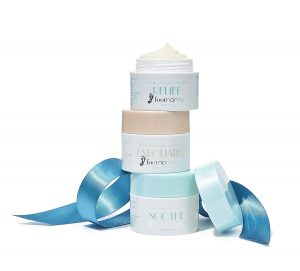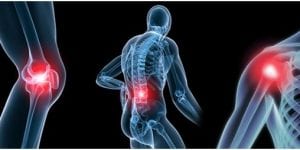Hemp Topicals – Everything You Need To Know To Get Started
HEMP in topical lotion / cream
Hemp products are becoming increasingly popular in the health and wellness sector. This natural chemical compound comes from the cannabis plant, but unlike its notorious counterpart, THC, it has no psychoactive properties. As a result, hemp does not intoxicate you.
However, it offers many health benefits. The research is still in its infancy stage, but scientists are discovering that hemp can reduce several health problems, from chronic back pain, to arthritis, anxiety, and epilepsy.
Hemp can be taken in different ways. Some people vape, others eat. Many people use hemp topical such as skin creams and balms. In this way, people can feel the effects of hemp without taste or smell. They also seem to be particularly therapeutic for people who use hemp to treat skin problems, chronic pain or general stress reduction.

Topical hemp should be applied locally by rubbing or massaging the skin. The topical themselves can take various forms, including:
Lotions and creams for the skin: hemp lotions and skin creams have a similar texture to creams used as body lotions. Like skin lotions, they contain other nutritious ingredients that promote healthy skin, such as shea butter and aloe vera.
Balms and ointments: Like lip balms or ointments you apply to your skin, hemp balms have a thicker texture because they contain beeswax and similar ingredients.
Oils: hemp oils look like massage oils. They feel smoother and greasy. (Note: hemp oils differ from “hemp oils” as a product category). In general, hemp oil describes each hemp product as it comes from the hemp plant.
Others: These are the main types of hemp topical that you will find today, but manufacturers are constantly introducing new innovative formats such as bath bombs and more.
For each of these varieties, it is common to find essential oils and other healthy minerals in the list of ingredients. Manufacturers add these elements to promote the end result of the intended use of the product, ex. For example, adding shea butter to a hemp cream.
As with any types of hemp products, personal preferences determine the best tropical product for you. Some people simply prefer the texture of one over another.
It may also depend on how you use the topical. If you want to use hemp for general relaxation, you may prefer a lotion that can be easily applied all over your body. If you need hemp to treat back pain, it can be more effective to rub your ointment on your back or ask a massage therapist to use a topical oil.
How does a hemp topical work?
With other forms of hemp, such as inhalation or food consumption, hemp penetrates directly into the bloodstream. Hemp topicals are unique because you do not ingest them directly into your body, you apply them to your skin.
Your skin is not very permeable. Therefore, if you treat your skin with topical, very little hemp enters the bloodstream. Instead, it interacts primarily with the endocannabinoid receptors of your body’s endocannabinoid system.
The endocannabinoids produced by your body and the external cannabinoids absorbed by hemp can bind and interact with these receptors. That’s why hemp can be so effective. Your body has built-in receivers designed to communicate with it.
There are two main types of endocannabinoid receptors. The CB1 receptors are found in your central nervous system, while CB2 receptors are found in your peripheral nervous system, your immune system and your digestive system. It is these CB2 receptors with which hemp cream primarily interact, while other forms of hemp uptake have access to both types of receptors when they enter the bloodstream.
When you use a hemp cream, the hemp binds these endocannabinoid receptors to your skin and absorbs the anti-inflammatory properties so that hemp can relieve pain or acne in some places.
Why use a hemp cream?
Some people prefer hemp creams over other types of hemp products because they can relax and get massages with it. Others find hemp creams to be effective in treating chronic pain, improving skin health and overall relaxation.
Chronic Pain: In a 2016 study, rats with arthritis received a topical hemp gel. After four days, the rats had decreased joint inflammation, better leg movements and a less intense pain response.

Skin care: According to several studies, the same anti-inflammatory properties that help alleviate the pain caused by hemp also help treat acne, dry skin and psoriasis. Hemp creams and lotions can also help with irritated skin.
Relaxation: The analgesic and anxiolytic properties of hemp also reduce the overall stress and pain associated with anxiety disorders, transient stress, or muscle fatigue after exercise.
Can hemp Creams intoxicate you?
No, hemp creams will not make you high. Unlike THC, hemp has no psychoactive properties. THC and hemp are found in cannabis and hemp varieties, but THC is a cannabinoid, which is responsible for the high sensation. Like most hemp-based products, hemp-based creams are mainly derived from industrial hemp with a THC content of 0.3% or less.
Not only does hemp not make it high, but studies have shown that it can neutralize the high THC content product when both are ingested.
The fact that hemp provides the same health benefits as marijuana without getting high is one reason why it is so attractive to people seeking natural treatments for their health problems. It is also popular because of the extremely rare side effects.
The use of hemp does not even have side effects. It can cause fatigue, but this is the most common case when people start a hemp diet. Other side effects, although rare, may be dry mouth, nausea, diarrhea, changes in appetite or weight and low blood pressure.
Hemp is typically very safe and well tolerated even in high doses. Pregnant or lactating women and children should avoid hemp. There are only a few studies available on the safety of hemp in pregnant women.
If you are taking other medicines, you should consult your doctor before taking hemp to avoid unpleasant side effects. When side effects occur, they are more common in people taking other medicines because of the interaction between hemp and their medications.
How to use hemp creams
Every product you buy contains instructions for use. Check them carefully and follow them. In addition to these instructions, you may also follow some of the best practices in using current hemp products.
Use the topical product only if your skin is dry and clean. This will allow your skin to absorb hemp completely. Avoid using the hemp cream before participating in activities where cream may disappear due to water or sweat. These can be showers, swimming or sports.
Then select the area you want to process. In case of skin problems or pain, apply to the affected area. You can use hemp for general relaxation. Or choose areas such as joints, wrists, shoulders, neck, or feet that benefit most from the massage (to improve the effect).
Clean and dry the area first to avoid rubbing bacteria that has come in contact during the day. Cleaning also removes all other skin care products or lotions that you use.
You may even want to apply several times. Rub the persons strongly on your skin (without pain, but to transfer the cream to the top layer of your skin).
Wash and dry your hands after use.
In general, you should feel the effect of hemp in 5 to 20 minutes. Your pain should disappear, and you should generally feel more relaxed. For skin problems, hemp takes longer to develop its magic.
